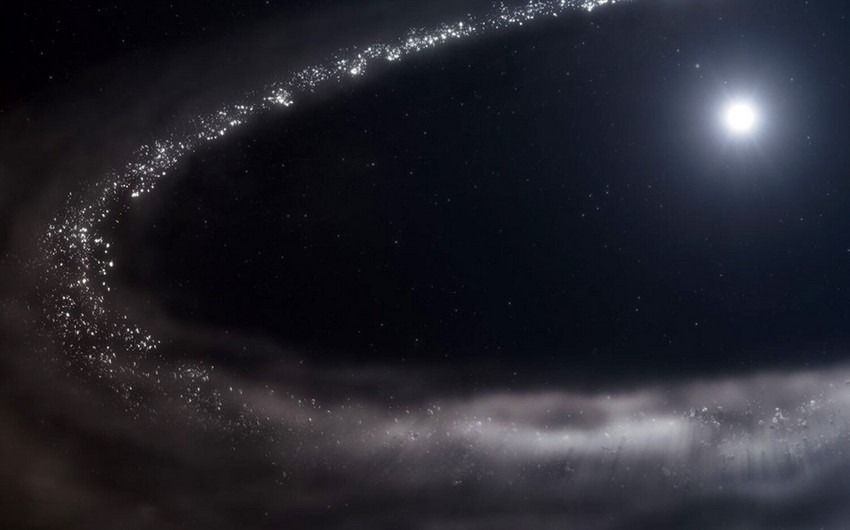Astronomers find evidence of water in other star systems

By Alimat Aliyeva
For the first time, astronomers from Johns Hopkins University and other scientific institutions have confirmed the presence of crystalline water ice in a dust disk surrounding the star HD 181327, located 155 light-years from Earth, Azernews reports.
The groundbreaking discovery was made using the James Webb Space Telescope (JWST), and the results were published in the prestigious scientific journal Nature.
The research team found that the water ice is not evenly distributed throughout the system. Its concentration reaches 20% in the outer regions of the disk, where the temperature is lower, and it practically disappears closer to the star. This distribution provides valuable insights into the physical processes occurring in distant star systems.
"We didn’t just find water ice; we found crystalline ice, a form similar to what exists in Saturn's rings and in objects in the Kuiper Belt," explained Chen Xie, the lead author of the study.
The star HD 181327, which is approximately 23 million years old, is surrounded by an active debris disk where icy bodies frequently collide. These collisions release tiny particles of "dirty snow," which were captured by Webb’s instruments.
Kristin Chen, a co-author of the study, noted, "Scientists have been waiting for data like this for 25 years. This discovery confirms that water plays a central role in the formation of planets — influencing the formation of gas giants and potentially being delivered to rocky planets via comets and asteroids."
The discovery of crystalline ice in the HD 181327 system opens up new possibilities for studying processes similar to those that occurred in the early Solar System. It suggests that water ice may be more common in planetary systems than previously thought, providing an important clue for understanding the building blocks of life.
Astronomers now plan to continue their search for water ice in
other star systems to gain a deeper understanding of planet
formation mechanisms and the potential origins of life. This
research could also shed light on how water — essential for life as
we know it — is distributed in different regions of the galaxy.
The presence of crystalline water ice in the dust disk around HD
181327 is a significant finding in the study of exoplanetary
systems. It challenges previous assumptions about the distribution
of water in such systems and offers exciting prospects for future
research. Given that ice plays a crucial role in the formation of
planetary bodies, understanding its distribution can provide clues
about the likelihood of life-supporting conditions in other star
systems.
Moreover, the findings may offer valuable insights into the early stages of the Solar System's evolution, as similar processes could have shaped the formation of our own planets and their ability to harbor life. This discovery could pave the way for a deeper understanding of the cosmic water cycle and its potential role in planetary habitability across the universe.
Here we are to serve you with news right now. It does not cost much, but worth your attention.
Choose to support open, independent, quality journalism and subscribe on a monthly basis.
By subscribing to our online newspaper, you can have full digital access to all news, analysis, and much more.
You can also follow AzerNEWS on Twitter @AzerNewsAz or Facebook @AzerNewsNewspaper
Thank you!
